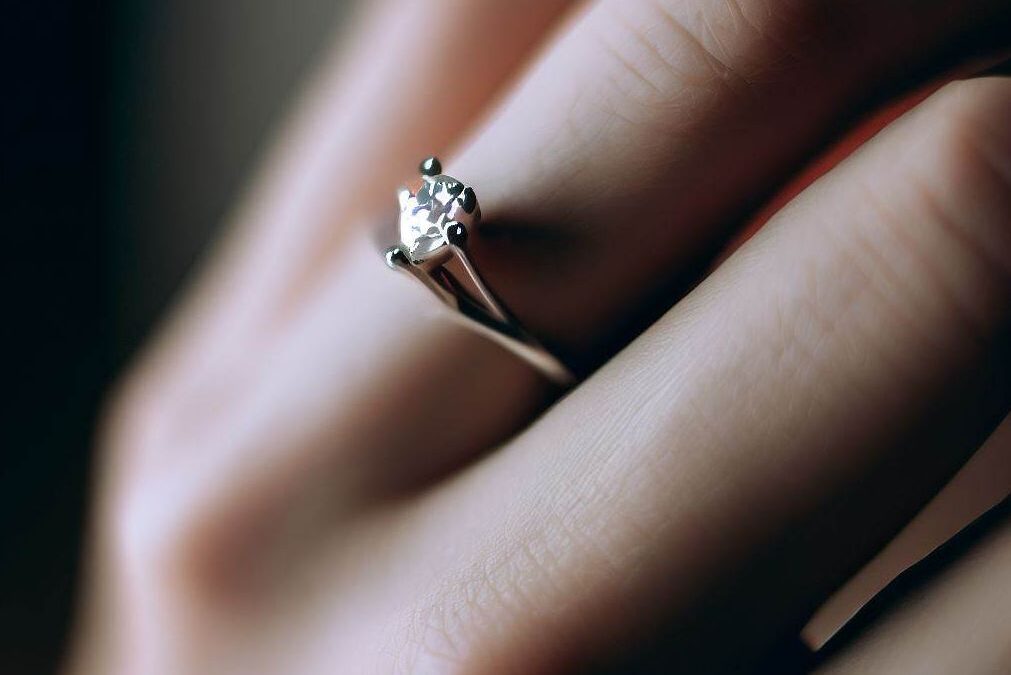An engagement ring is a symbol of the love and commitment between two people. When you ask your significant other to marry you, you want to make sure that the ring fits perfectly. Unfortunately, over time, your fingers may change shape, and the ring may no longer fit comfortably. Resizing an engagement ring is a solution that many people choose when their ring no longer fits as expected. However, resizing a ring is not as simple as it may seem. There are several factors to consider and steps to take to ensure the process is done properly.
In this article, we’ll cover everything you need to know about resizing an engagement ring, including when to resize, how to resize, potential risks and costs, and how to care for your ring after resizing.
Why Resizing Might be Necessary
Many people choose to resize their engagement rings for a variety of reasons. Perhaps the ring is too loose or too tight, causing discomfort or the risk of losing the valuable piece of jewelry. Additionally, fingers can change over time due to weight gain or loss, pregnancy, or other factors, causing the ring to no longer fit properly.
Another reason for resizing could be to update the style of the ring. If the original ring is outdated or doesn’t suit the wearer’s taste, resizing can be a great solution to keep the sentimental value of the jewelry while also updating its appearance.
Factors to Consider When Resizing an Engagement Ring
1. Ring Material
The first factor to consider when resizing an engagement ring is the material it’s made from. Some materials, such as gold and platinum, can be resized without issue, while others, such as tungsten and titanium, cannot be resized at all.
It’s important to know the type of material your ring is made from and whether it can be resized to avoid any potential damage.
2. Ring Style
The second factor to consider is the style of your engagement ring. Some styles, such as solitaire rings, are easier to resize because they have a simple design, while others, such as pave or halo rings, can be more complicated to resize due to their intricate detailing.
It’s important to take into consideration the style of your ring when deciding on the size adjustment to ensure that the resizing doesn’t affect the overall look and design of your ring.
3. Size Difference
Another factor to consider is the size difference between your current ring size and the desired size. A small adjustment of one or two sizes may be easy to achieve, but a larger adjustment may require more work and potentially affect the ring’s structural integrity.
It’s important to work with a reputable jeweler who can guide you on the best course of action based on the size difference and the ring’s material and design.
4. Future Changes
The final factor to consider is any potential changes you may want to make to your ring in the future. If you plan on losing or gaining weight or want to add additional stones, resizing your ring now may not be the best option.
It’s important to consider your long-term plans for your ring and discuss them with your jeweler before deciding on a resizing option.
Resizing process
Resizing a ring, whether it’s to make it smaller or larger, is a process that requires professional skills. Here are some general principles on how this is done:
1. Making a Ring Smaller:
- Ring Sizing Beads: Jewelers can add small beads to the inner part of the ring band. These beads will effectively decrease the ring’s size by creating a snug fit on the finger. This method is often used when the ring needs to be downsized by less than one full size.
- Cutting and Soldering: If the ring needs to be downsized by a full size or more, jewelers often cut a small portion out of the band, rejoin the ends, and then solder them together. This process requires precise cutting, reshaping, and finishing to ensure the ring still looks seamless.
- Spring Inserts: This is a solution often used for heavier rings. A spring-like component is added to the inside of the band which makes the ring fit tighter on the finger.
2. Making a Ring Larger:
- Stretching: If the ring needs to be enlarged by less than one full size, jewelers may opt to stretch it. However, this method can only be used on simple band rings and not on those with stones, as the stretching process could loosen the settings.
- Adding Material: For increasing the ring by a full size or more, jewelers cut the band and add an extra piece of metal to enlarge the ring. Then, they solder the cut ends to the new piece, reshape and finish the ring so that it appears as one seamless piece.
FAQ about Resizing Your Engagement Ring: A Simple Guide to Achieving the Perfect Fit:
– Why did the engagement ring visit the jeweler?
– Because it heard that’s where you go to lose a few carats!
Ciao! I am Salvatore, a master jeweler from the mesmerizing island of Sicily. With a wealth of experience spanning over ten years, I take great pride in my exceptional craftsmanship and meticulous attention to detail. My expertise lies in both traditional and contemporary jewelry designs, where I seamlessly blend the rich history and culture of my beloved Sicily into each distinctive piece.




